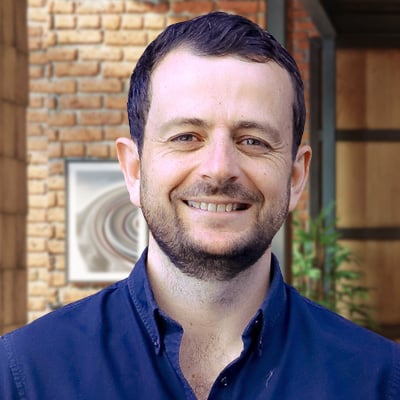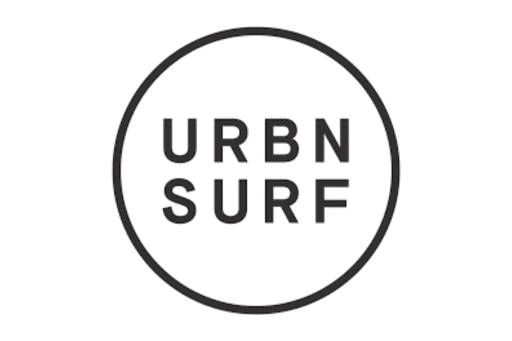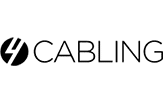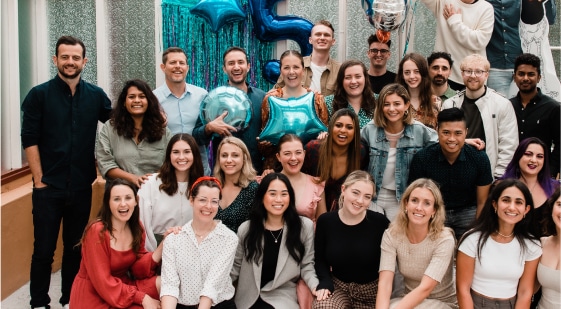Masculinity in Marketing and B&T Best Ad Campaign Of 2022 - 'Boys Do Cry' w. Simon Lee
Episode Description:
Simon Lee, one of the leading creative minds in Australian advertising, shares his groundbreaking and award-winning campaign 'Boys Do Cry'. Winner of 2022 B&T Best Advertising Campaign the 'Boys Do Cry' campaign has become a global movement that has changed the conversation about men’s mental health. Listen to how Simon created an anthem for a new mold of masculinity - rewriting The Cure’s famous song ‘Boys Don’t Cry’ into Boys Do Cry.
Key Takeaways:
- Creating an anthem for a new mould of masculinity - rewriting The Cure’s famous song ‘Boys Don’t Cry’ into Boys Do Cry.
- How initial concepts and ideas were transformed into the final product.
- The campaign reached over 140 million people.
- Over 40,000 men who have visited boysdocry.com.au have gone on to seek help through the resources provided.
- Promoting the campaign through a multi-channel marketing strategy using TVC, Radio, ooH, and digital including TikTok.
- How brands have a responsibility to broaden their perceptions of men and masculinity in their marketing.
Featuring:
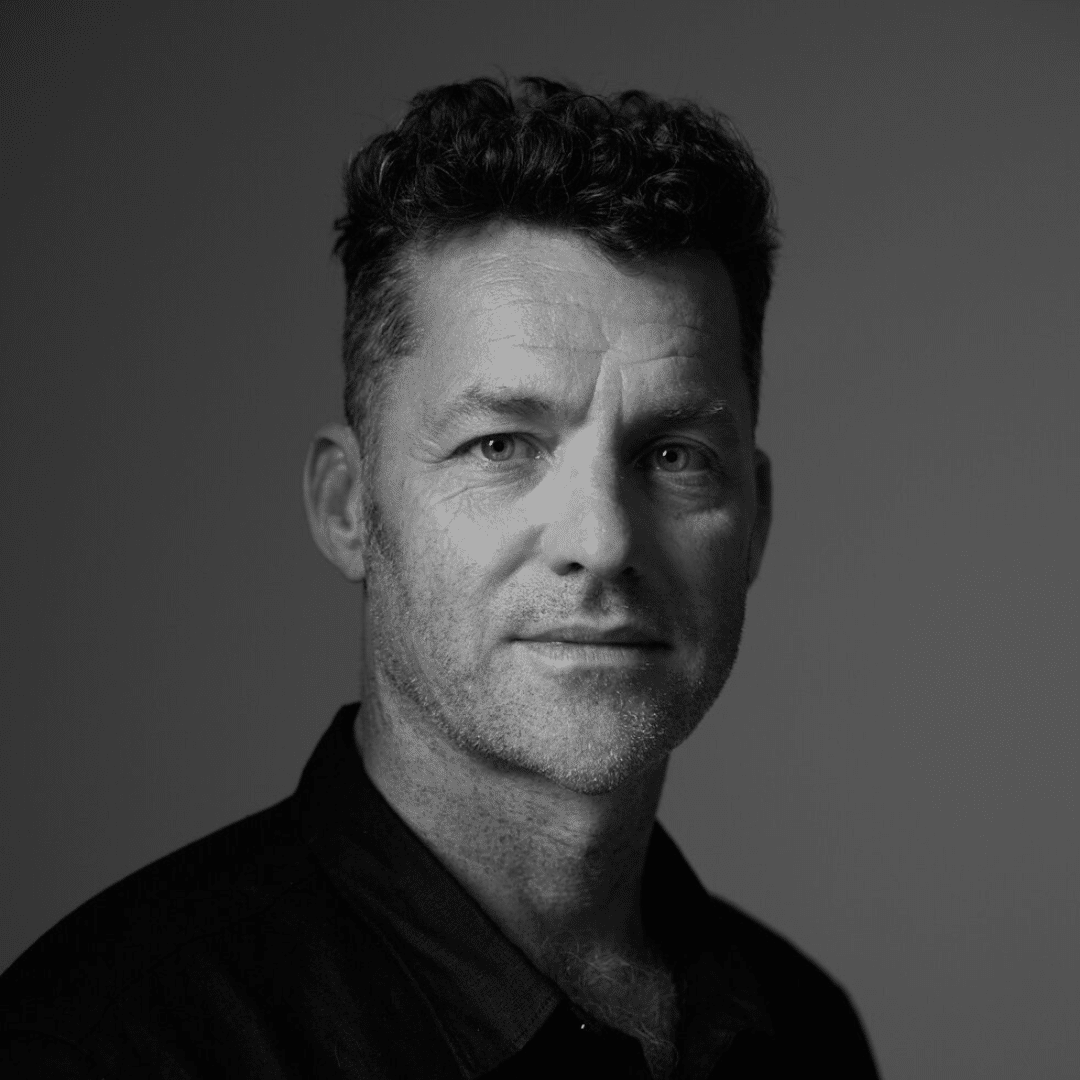
Simon Lee
About the Guest:
Simon Lee is the Chief Creative Officer (CCO) and Partner at The Hallway, an Independant Advertising Agency based in Pyrmont, Sydney. He is recognised as one of the leading creative minds in Australian advertising, having created successful campaigns for Westpac, The Australian Financial Review and Qantas Frequent Flyer to name a few. You can follow him on LinkedIn or go to his website.
Transcript
James Lawrence: I'm joined today by Simon Lee. Simon, welcome to the pod.
Simon Lee: Thanks for having me. Great to be here.
James Lawrence: It is excellent to have you on. So Simon is one of the leading creative minds in Australian advertising. He is the chief creative officer and partner at The Hallway. The Hallway has a well-earned reputation as one of Australia's top advertising agencies, working with brands like GWM, Google, Nova, Extreme Motion, Tourism Fiji and many more. It was only last month that The Hallway won ad campaign of the year, as well as Independent Agency of the year at the 2022 B&T Awards. Simon, it's a great kind of story all the great work you've been doing over the recent years. And today we thought it would be great to have you on to the pod to discuss in much more detail, the ad campaign of the year that won that award, which was the Boys Do Cry campaign. So let's get into it. So if we could just talk, I guess, start with how it came together and the different stakeholders that have been involved.
Simon Lee: Yeah. Well, I hope you're all sitting comfortably because it's quite a long story. Campaigns like Boys Do Cry take a bit of time to bring out into the world. And so this specific story started, I think it was probably in 2018. I can't remember exactly how we came across these stats, but we were made aware of the horrifying reality that an average of six men in Australia take their own lives. I was just flabbergasted by that statistic to think that in this wonderful country that we live in, that there are six men every day who feel so bad that they feel the only way is to take their own life. I don't actually want to continue. And so it was one of those moments for me where I felt very strongly that that was unacceptable and that we as creative people, there must be something that we could do.
Simon Lee: And so we started by really asking that question of why? Why is it that men are taking their own lives and through doing that, we surfaced another statistic that men represent 75% of all suicides in Australia, but only 25% of the people who reach out for help for mental health issues are men. So you get this very clear sense there are a lot of guys who are doing it really tough, but they're not reaching out for help getting help. Which then prompts another question of; why are they not getting help? And that's where it gets very interesting because you start to sort of realise, and there was a book that I that I read by the British artist Grayson Perry called The Fall of Man, and in that he talks about the ministry of masculinity, which is this sort of unspoken, unwritten series of male commandments in a sense that has dictated for generations the sort of traditional mold of what it is to be a man. And those include things like real men don't talk about their feelings, they don't reach out for help when they need it. And perhaps the cornerstone of the dictates of traditional masculinity is that boys don't cry. And so then you go, hang on, boys don't cry. Started to think about that and okay, well hang on, what if we took The Cure's iconic song Boys Don't Cry and transformed it into Boys Do Cry, which would be an anthem for a new mold of masculinity. So that was the spark of the of the idea, if you like.
Simon Lee: And so we started by rewriting the lyrics. And in fact, I'd had some conversations with some good muso friends of mine from a company called Uncanny Valley. Charlton Hill and Justin Shave over there, and I presented them just a one-pager of the idea, an outline of the idea, and said, hey guys, what do you think? And said, look, I think it's fantastic. We've got to do this. And I said to them, well, we need we need to get these lyrics. Who's going to write them? And I was expecting Charlton, who's a pretty experienced singer-songwriter, to say, hey, I'll do it. And he's just sort of pointed at me and said, well, you're going to write this?
James Lawrence: Well hang on.
Simon Lee: I've written some bad poetry in my time and I've written a lot of TV ads and scripts, but I've never really written the song and said, look, you know, this is this is coming from you. You've got a writer. So I took the original as the framework and then rewrote the lyrics to as I say, be an anthem for a new mold of masculinity, all about actually sharing your emotions and getting talking when the going gets tough. And then we recorded an acoustic demo of the song with Charlton, had a meeting with the folks at Universal Music. They came into the agency, we played them the song, we told them what it was all about. And there were tears shed in that meeting and they very kindly said that they would support this.
Simon Lee: But then, of course, they have a certain say, but the real person who could actually greenlight us being able to use the songs is Mr. Robert Smith of the Cure. A few weeks went by where we knew that the Great Robert Smith was looking at our lyrics. And then the call came in one day, a few weeks later to say, yeah, Robert Smith's on board. You can use the song. But we still at that point, we had a song that was approved and licensed and what have you, but we didn't have any money and we knew that to really launch this as pointedly as possible that we needed a film along with the song, a music video, as it were. But at this point, we're probably in in 2019 and there was a long period, probably about the best parts of the year, where I basically went around pitching this idea to all sorts of different people, from sporting bodies to not-for-profits to various sort of clients and people in our network.
Simon Lee: The response was unanimously positive in the sense that everyone could see the merit in the idea. But there's a big gap between seeing the merits in an idea and having the money to back it. And so it was always a case of it's great, but. And so sometimes the but would be like, we're already supporting other charities. This doesn't align with our strategic objectives, or simply I'd love to, but we just don't have any budgets until ultimately, I had a colleague of mine arrange a meeting for us to talk with Unlimited. It was Rachel Troy who at the time was the chief operating officer at Unlimited, presented her the idea. She said, it's great. And it was no longer a but, it was it's great. And she said, and gotcha for life as one of our charities, I think it's a perfect match. You've got to meet them. Next thing, I'm in a meeting room with Gus and the producer of his documentary, Man Up at Jennifer Cummins and pitched the idea to them. They loved it. I'd never met Gus before, but by the end of the meeting, we were we were hugging like long-lost brothers and crying and sharing our story and what have you/
Simon Lee: It transpired that Jennifer had a fantastic relationship with the University of Melbourne Center for Mental Health, and that they actually had some government funding to create some content to drive positive impact around male mental health and do a study on it. And that's how we managed to fund the project. Then through Unlimited, we had an initiative come on board as the as the media partner. And through them the whole of the Australian media industry, we pitched it to them and we had fantastic support from media owners to bring this thing into market. It was a pretty much a year ago today. So in late November 2021, but that finally this project that had been conceived back in, originally conceived in 2018, finally saw the light of day.
James Lawrence: Amazing. And that date a year ago, was that when the video was shot or is that when it went into market?
Simon Lee: That's when we went live. Yeah. So we went live in the November. I think we shot the video in about May 2021. And so that was with our partners, production partners, good Oil and young director Tom Campbell, who came on board and brought his creative vision to it. That was a huge emotional day with lots of wonderful people coming together to shoot this this very emotional piece of film.
James Lawrence: I’d love to talk about that for a few minutes. And I think for listeners, if you're not driving a car at the moment, pause the pod and jump across to YouTube. Boys Do Cry will bring it up. Is that right? I think, highly emotional. Really interesting to dig into where it was shot, how it all came to be. Just everything to do with the actual day.
Simon Lee: More than happy. I mean, that was it. That's a big part of the story of bringing this to life, because the actual kind of creative execution went through a number of different possible iterations. We started initially thinking maybe we would get together a sort of ensemble of Australian celebrities to come together and get some recording artists and then even some sort of influential figures, male figures from the worlds of sport and what have you and do that. And so we spoke to a few people and there was a little bit of interest, but it wasn't coming together as we'd have liked it to. Working with Tom from Good Oil we actually realised, what this needs to be for this to be as powerful as it can be, it actually just needs to be regular guys. So it then came down to ensuring that we had a really diverse array of ages and cultural backgrounds and ethnicities so that it really was representing everyone.
Simon Lee: And so that was the casting process was to was to get a bunch of regular blokes of all backgrounds together to form this real men's choir. And that's what we got. This wasn't a bunch of people who sing together all of the time. They came together. We first recorded the track in a studio. Just the audio, a sort of a demo that we could have as a background track when we were shooting. And then we came together in Marrickville Town Hall. So it was May 2021, and I remember the day it was a beautiful day, beautiful sunny day. And I drove my car and I parked on a side street not far from Marrickville Town Hall. And I was walking up the street, the choir, the guys were already in there rehearsing. And so I had this extraordinary realisation that finally, these words that I'd written, this idea that we'd had was coming to fruition.
Simon Lee: As I heard the sounds of the song echoing out of Marrickville Town Hall - amazing. I suppose the other important person who was part of that choir was Dallas. So Dallas Woods is an Indigenous Australian rapper from the Kimberley. And we'd had a conversation with him a few months before the shoot. It was through his record label, and we told him about the idea. And unfortunately, Kimberley is one of the sort of suicide capitals of the world. And so Dallas has had far too much exposure to people in his community; friends, family members, affected by suicide. And so it was something that was very close to his heart.
Simon Lee: And so pretty much immediately when I told him about the idea, his words were, tell me where I need to be and when and I’ll be there. Then there was creatively the question then of how do we integrate a rap into this sort of fairly pared back acoustic piano rendition of a song? But we gave him our lyrics and gave him a sort of piano track, and he went away and wrote the rap that you'll when you watch the music video or listen to the song and when I received an email with those lyrics, it ends with the words, I wish I'd had that convo with my brothers in the sky R.I.P. And even as I say those words now, I feel myself kind of tingle and tear up because it was just so emotionally powerful and so I’m sort of eternally grateful to Dallas for being part of this journey, because I think that his words and his performance are hugely impactful.
James Lawrence: And on the actual day, like how how long did filming take? Was it kind of one shot and done? Was it multiple? I guess, what can you tell us about the actual day?
Simon Lee: It was a very long shoot day because you are working mostly with people who've never been on camera before, some of them. So there were guys who had been in choirs and what have you. And so the performance piece, they were fairly comfortable with, but getting them all to be a coherent bunch from a singing perspective was a little bit of a challenge. But we had great people as part of our crew who are very experienced in that space. And we also had Eddie Boru, who is the bearded chap that you see in the video, who is actually a pretty experienced actor. And he did an incredible job in really bringing that group together in a very authentic way. But one of the things that you'll see when you watch, there's an incredible vulnerability to the guys. And that was again, all credit to Turman and his first assistant and the crew because the fact is, I think for most of us, if you're suddenly put into a town hall and asked to sing in front of a camera, it's uncomfortable, you know? And then on top of that, the words that you are singing are encouraging vulnerability, the sorts of words that men traditionally aren't comfortable saying. It was wonderful to be able to capture that, because in the film, the intent was to get a sense initially of a reluctance to open up and express themselves. But then as they start to sing together and realise, hey, together, we're changing this, it becomes a confident rallying cry to go we can change this. We can herald in a new era of a healthier, happier, and more vulnerable masculinity.
James Lawrence: But it definitely captures that, right? So raw at the beginning, and you feel it build as it moves through. If that was the intent then it was completely nailed.
Simon Lee: Great to hear you say that because that was the intent. But I suppose the other thing where we knew something special was happening was throughout the day there'd be different people who'd been involved in the project in different ways, they would come and poke their heads in to have a look at what was going on at the shoot. People would come in, hear what the guys were doing, and then you'd see them wiping a tear.
James Lawrence: That's beautiful.
Simon Lee: The sense of camaraderie between everyone that was there, I think we all knew that we were doing something important and all these creative people, it was so beautiful because we're using a gift or talent or whatever you call it, our creativity, for good. I think everyone found that to be a hugely positive and pleasing experience.
James Lawrence: I want to I kind of want to pause that point, because I do want to come back to it later on in the discussion. But I guess it'd be really interesting to hear about what the rollout has been like, how it's been received, where it's been seen. But what the initial impact has been?
Simon Lee: It's really important that we do discuss it because unless the work is having an impact, it's just pretty pictures and noise sounds that maybe an award jury likes or what have you. This is about driving real change. There's several really compelling statistics from a results point of view. The first is a reach number, which is an absurdly large reach number in the region of 140 million.
Simon Lee: The core audience was Australia and Australian men. But as those numbers suggest, it pretty much went global. And we were receiving emails and social media messages from people all around the world. So we got messages from a psychology professor in Lisbon who was playing it to their students on first thing on Monday morning. There was a school in Germany who were asking for the lyrics because they wanted to perform it with their music class. People in South Africa getting in contact to find out more about it all. Literally thousands of social media messages from people whose lives have been impacted by suicide and people actually thanking us for doing that work and encouraging us to do more of it. And that was both heartwarming and heartbreaking to hear some of those stories.
Simon Lee: And then in terms of impact, the University of Melbourne, as I said earlier, their center for Mental Health conducted a study with 500 men of varying ages, from sort of 15 to 80 something. And very encouragingly, the results of that survey were that over 51% of all guys who saw this film were more positively inclined to reach out for help when they saw it. So that's that's hugely encouraging. And it basically says to you, well, the more people that see this film, the more positive impact we have. So it's a case of getting eyeballs on it. And then I suppose that's all well and good, but if we've not got demonstrable change, there's still work to be done. But if you look at the website stats, we've actually seen now over 40,000 men who have visited. Boys do Kokomo have gone on to seek help through the links that are on that website. We know that if people are reaching out for help, we're decreasing the sort of potential of them to go and think about or do the unthinkable. It's hugely encouraging.
James Lawrence: How did you go about promoting it?
Simon Lee: It was both paid and earned. Initially, the full 3.5 minute music video was out on online platforms, so on YouTube and Vimeo and what have you. There were then cut downs of that that ran as TV commercials. We had a 30 and a series of fifteens and then a whole bunch of out-of-home. The out-of-home was great, really simple copy-led executions that were quite literally sort of rewriting these dictates of masculinity. So don't talk about your feelings became do talk about your feelings. In line with boys don't cry becoming boys do cry. That was very impactful. Radio was a big part of it as well. We did a full radio ad break takeover, where we ran the full 3.5 minutes of the song with the call to action, and then a bunch of shorter sort of 30 second on radio as well. And then another interesting part of it was working with TikTok. So we went out to the TikTok creator community, and there was a couple of people in particular who picked it up and ran with it, and that extended our reach massively. And then on top of that, both Gus I were very active from a PR point of view, doing radio, TV, whatever, interviewing any anyone who wanted us to talk about it, we were there.
James Lawrence: How did it feed internationally?
Simon Lee: It's a good question because we didn't do anything intentional and perhaps, in hindsight we should have and that number could be even bigger. But it just happened organically. It went out to the advertising community. It did get picked up by The Drum over in London and one of the big American sites, I can't remember if it was Adweek, I think it was Adweek.
James Lawrence: I think researching for this, I found an article on it.
Simon Lee: So they picked it up and then it goes to various industry blogs and what have you. But how it got beyond that was just organic mostly through social media.
James Lawrence: Really amazing. Is it the thing you’re most proud of, do you think in your career to date?
Simon Lee: There's a bunch of things I've done that I am proud of. Yeah, it is. It is the thing that I'm the most proud of in the sense that it's with this fabulous team here at The Hallway coming together to do something with a strong, positive impact. I'm proud of the idea. I'm proud of the team. I mean, Gus Walden said to me right at the beginning of the journey, he said, look, Simon, whatever happens, just know when you go to bed at night that you've made something that is going to be saving lives.
James Lawrence: It's it. You can't really ask for much more than that.
Simon Lee: Yeah, very proud.
James Lawrence: Have you had any feedback from Robert Smith?
Simon Lee: Actually, I say that I haven't. I think Robert is quite reclusive. I've had indirect feedback. When the film was sent over because he actually had the final signoff on the film - that was again, a nerve-wracking wait to see whether he'd whether he'd like the film - the feedback came back to say that he didn't just like it, he loved it. In fact, universally they’ve never had such a positive response to a piece of sinc before. I suppose the ultimate compliment is that he actually retweeted the video and the campaign on his own socials. That's true. I'll take that as a nod from the great man.
James Lawrence: I'd love to bring us back now to, you know, you're in Marrickville Town Hall and a bunch of ad agency people and peripheral people have kind of come together and everyone's getting emotional and kind of talking about using these skills and knowledge for good. Which I think is kind of the second part to the conversation today where I'd like to steer things is, yeah, advertisers, brands, responsibility around doing good. How do you feel about it?
Simon Lee: I have quite a strong view on this and the people who might have seen me speak at various things or the odd article that I've kind of published in the trade media, I actually view every single media spot, every billboard, every radio spot, every TV spot as an opportunity to put something positive into the world. The world needs a positive impact. Now, I'm not saying that every one of these spots should be filled with not-for-profit work or cause-related work, but I do believe that all of us as brands, marketers, and their agencies have a responsibility to to fill those spaces with positive work.
Simon Lee: At the very least, work that entertains or makes you makes you think differently in a positive way or drives positive behavior. That is, for the good of us all.
James Lawrence: So leaning into that is, I think the statistics that you presented at the beginning of the pod are shocking, right? And probably not all that surprising, sadly, in terms of just the stereotype of what it is to be a man and to not be vulnerable and not open up and to keep things bottled up. What are your observations about how brands speak to men, like have things changed or are we still doubling down on all the stereotypes?
Simon Lee: It's a really good question. I think that we are starting to make some positive progress. But still, I would say that there's far too much of the stereotype of either dumb blokey bloke. I won't say names, but the sort of gambling category in particular, iif you watch that, you'd think that every bloke is an absolute moron. You know, like an ape on the one hand. Then, on the other hand, you've got sort of the perfect ab guy, with the perfect job who's the go-getter, Gillette kind of early 90s style advertising.
James Lawrence: You still see that? Now?
Simon Lee: I don't have a problem with that guy. I don't have a problem. There are some perfectly jawed, great ab chiseled, sort of perfect go-getters. And there are some apes. But in the middle, there's a whole wonderful diversity of people who identify as male in that whole spectrum. And so where we need to be working is ensuring that that full spectrum of masculinity is, is represented alongside ape and chiselled guy.
Simon Lee: And you know what normal actually means? Wondrously diverse. And that's what we should be. That's what we should be celebrating. And back to the point around responsibility. It's only been relatively recently in my life that I've realised the impact that advertising had on my perception of what it was to be a man. I turn 50 next year. So I was a teenager in the late 80s, early 90s. And when I reflect back on it, the perception that I had of what masculinity was, was that Gillette thing. I remember the ads and wanting to be that, wanting to be the Gordon Gekko style Wall Street bloke or just these ludicrous high achievers or the hero, or remember an ad for hero aftershave of a guy emerging from a fire clutching a puppy, you know? And as a 13 or 14 year old, you're going, oh my gosh, that's what it's all about. It's ultimately hugely dangerous that you can't live up.
James Lawrence: You cannot live up to that. Yeah. I think it just reinforces an impossibility. Which then if you bring it back to the beginning of the conversation, heaping on expectations that are unrealistic, that just cripples.
Simon Lee: Massive pressure to conform. Because if you're not doing that, you're not doing it right. I'm not sure how many of us in ad land and in marketing are really conscious of the responsibility that we have. I think it's far too easy to be able to sell it. Hey, it's just advertising. Well, you know what? Advertising is a significant part of the cultural landscape, and it's the cultural landscape that shapes our ideas of the world and how we should behave in it. So if we want to live, if we want to live in a healthy, happy, balanced world, then we've got a massive part to play in painting the picture of the world that we want to live in because we are quite literally co-creating it.
James Lawrence: That's 100% right. I don't think it's a conversation that is happening or has happened typically. Probably a wider awareness of the typical portrayal of what it is to be a woman in terms of body shape and body type, which thankfully, hopefully, is changing. But I think it probably isn't as often thought of as the Gillette perfect abs and perfect teeth. I think stand to gain a lot by having more realistic expectations on what it is to be normal. Right?
Simon Lee: Absolutely.
James Lawrence: Well, Simon, first of all, I think congratulations. To have an idea to feel passionate about something to do good is ideal. But I think to tenaciously hunt it down and get it done and have that kind of reach when your target market was probably about 10 million Australian blokes isn't bad. I said earlier on in the pod to go to YouTube, but the website itself is a good place to direct listeners as well?
Simon Lee: Yeah. Boys do cry.
James Lawrence: If you haven't listened or watched the video, I recommend you to do so. Simon, where can we find you? Because we're LinkedIn, website address, all that kind of stuff.
Simon Lee: I'm actually not as active as I probably should be on social media, but just look for Simon Lee The Hallway on LinkedIn or our website; The Hallway. Happy to hear from anyone who shares my passion for using creativity to drive positive impacts in the world.
James Lawrence: Awesome, Simon, thanks for spending your time with us on the Smarter Marketer podcast.
Simon Lee: Absolute pleasure. Thank you for having me.
